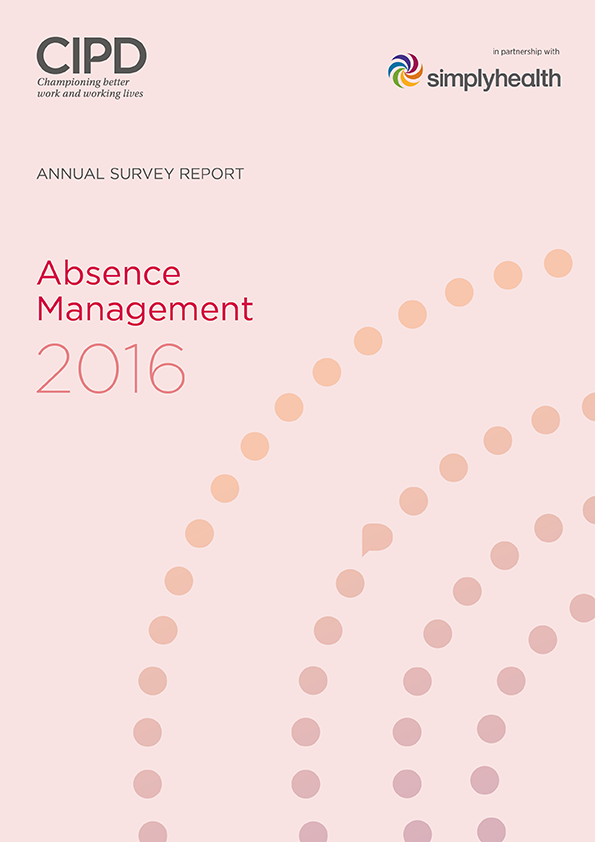Key findings from the 2016 CIPD Absence Management Survey

Here’s a breakdown of some of the key findings from this year’s report:
Absence Levels
- Absence is at its lowest level for 7 years and has decreased to an average of 6.3 days a year per employee compared to 6.9 days per employee in 2015
- Absence levels tend to be higher in larger organisations. Only 4 days per year, per employee are lost because of absence in organisations with less 50 employees compared to 9.4 days lost for companies with over 5,000 employees
- Manual workers tend to have 2.1 days more absence than non-manual workers
Cost of absence
- Only a third of organisations monitor the cost of employee absence
- The public sector and larger organisations are more likely to monitor absence. 55% of public sector organisations do so compared with an average of 33% for the private sector. 72% of organisations with over 5,000 employees monitor absence compared to only 22% of organisations that have less than 50 employees
- The overall average cost of absence per employee per year is £522 compared to £554 in 2015
Causes of absence
- Minor illness is the most common cause of short term absence followed by stress
- Stress, mental health issues, and acute medical conditions are the most common cause of long term absence
- A quarter of organisations cite non genuine sickness or pulling a sickie as one of their top five causes of absence
Managing absence
- Almost all organisations have a written absence/attendance management policy
- Over a quarter of organisations’ report absence management as one of their top 3 people management priorities
- The most common method for managing short term absence are return to work interviews, trigger mechanisms to review attendance and giving sickness information to line managers
- The absence methods that organisations rank as most effective are: occupational health involvement, return to work interviews and trigger mechanisms
Work related stress
- Nearly a third of respondents report that stress related absence in their organisation has increased in the past year
- Stress is now the most common cause of long term absence and the second most common cause of short term absence after minor illnesses
- Just 1 in 9 of organisations report that stress related absence has decreased
- Workload is the most common cause of stress related absence followed by non-work relationships and management style
- Just over three fifths of organisations are taking steps to identify and reduce stress in the workplace
- A third of those that report stress as one of their top 5 causes of absence are not taking any steps to address it
- Common methods for reducing stress related absence include: staff surveys, flexible working/improved work life balance options, risk assessments and stress audits
You can download your free copy of the survey here

This article was provided by Simplyhealth.
Supplied by REBA Associate Member, Simplyhealth
Our health plans make it easy for people to maintain their health&wellbeing.







